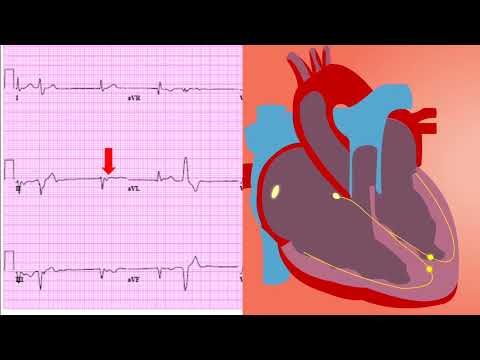🎬 Video Summary
This video focuses on rhythm identification in a medical context, particularly within ECG interpretation. It’s a valuable resource for medical students, doctors, and healthcare professionals looking to enhance their understanding of cardiac rhythms and neurological implications. Learn to identify various rhythms and improve your diagnostic skills related to #medicaleducation, #doctor, #ecg, #cardiac, and #neurology.
🧠Teaching Pearls
- 💡 Accurate rhythm identification is crucial for timely and effective patient management.
- 💡 ECG interpretation requires a systematic approach to avoid overlooking critical findings.
- 💡 Consider neurological conditions that can impact cardiac rhythm.
- 💡 Continuous learning and practice are essential for mastering ECG interpretation skills.
- 💡 Recognizing subtle variations in rhythm patterns can significantly impact patient outcomes.
❓ Frequently Asked Questions
Q: What are the most common ECG rhythms a doctor should know?
A: The most common ECG rhythms include normal sinus rhythm, atrial fibrillation, atrial flutter, ventricular tachycardia, ventricular fibrillation, and various heart blocks. Recognizing these rhythms is fundamental for accurate diagnosis and treatment.
Q: How does neurology relate to cardiac rhythms?
A: Neurological conditions can affect cardiac rhythms through the autonomic nervous system. Stroke, traumatic brain injury, and certain neurological disorders can disrupt the heart’s electrical activity, leading to arrhythmias.
Q: What is the first step in interpreting an ECG?
A: The first step is to ensure proper lead placement and calibration of the ECG machine. Then, assess the heart rate, rhythm, P waves, QRS complex, and ST segment.
Q: How can I improve my ECG interpretation skills?
A: Consistent practice, reviewing ECG examples, and seeking mentorship from experienced clinicians are effective ways to improve your ECG interpretation skills. Consider using online resources and attending cardiology conferences.
Q: What are the life-threatening arrhythmias a doctor needs to recognize immediately?
A: Life-threatening arrhythmias include ventricular tachycardia (VT), ventricular fibrillation (VF), and asystole. These rhythms require immediate intervention, such as CPR and defibrillation, to prevent sudden cardiac death.
Q: Can electrolyte imbalances cause irregular heart rhythms?
A: Yes, electrolyte imbalances, particularly potassium, magnesium, and calcium, can significantly impact cardiac electrical activity and lead to various arrhythmias. Correcting these imbalances is often crucial in managing irregular heart rhythms.
🧠 Key Takeaways
- 💡 Learn to systematically analyze ECGs to identify different cardiac rhythms.
- 💡 Understand the relationship between neurological conditions and cardiac arrhythmias.
- 💡 Recognize life-threatening arrhythmias and their appropriate management.
- 💡 Appreciate the importance of ongoing education and practice in ECG interpretation.
- 💡 Gain confidence in your ability to contribute to patient care through accurate rhythm diagnosis.
🔍 SEO Keywords
ECG interpretation, cardiac rhythm identification, medical education ECG, neurology and heart rhythm, heart rhythm analysis, doctor ECG skills, ECG training for medical professionals.
“`

